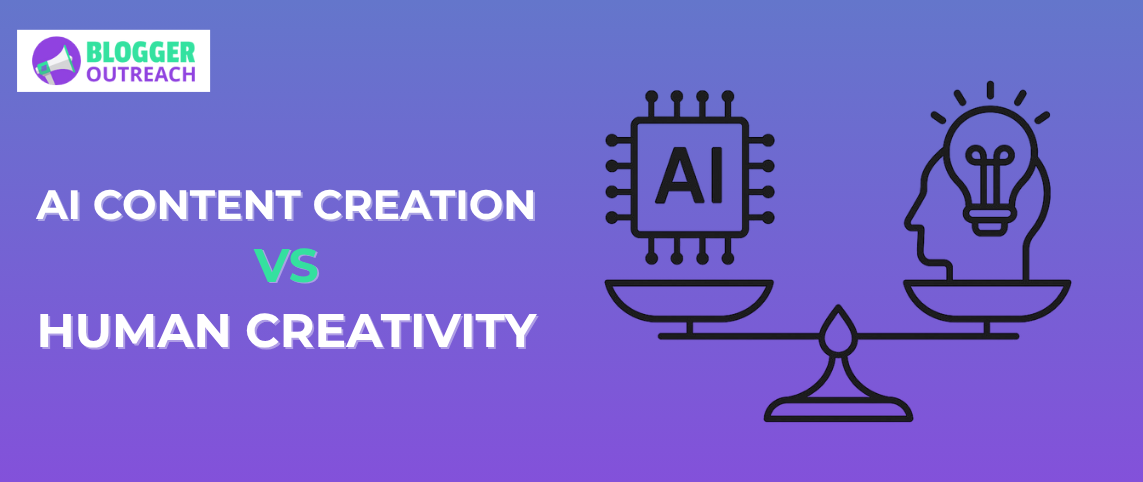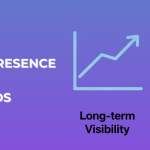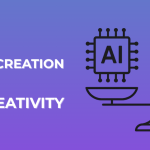Table Of Content
AI content creation is no longer a new trend. It’s the current practice. Whether it’s a soft drink leader like Coca-Cola or an OTT giant like Netflix, everyone’s using generative AI for content creation.
However, AI prominence has also led creators and brands to question whether human creativity is still necessary for content creation.
AI does the heavy lifting with ideation, planning, drafting, personalization, and so on. However, human intervention is still necessary for emotional depth, strategic insights, and value addition.
We have explored the role of AI in today’s content creation process and how human intervention helps strike a balance with strategic oversight.
The Role Of AI In Content Creation

Ask a marketer how they are creating content, and they will reference two/three AI content creation tools while describing their process. From creating audience personae to finalizing a blog post, AI now assists creators every step of the way.
Now we use AI to research, analyze competitors, and track the performance of published content. In short, AI is integral to today’s process of content creation, management, and optimization. The following are the diverse aspects of the content journey that require the help of AI:
1. Content Strategy Development
AI content creation is the way to thrive in today’s competitive digital landscape. However, the use cases aren’t limited to creating a blog post by entering a topic and keywords in ChatGPT. Content strategy is the foundation of giving content a direction, and that’s where AI can help the most.
Let’s say that you have a local bookstore where you sell used books. As your network of customers and sellers grows, you can take your store’s presence to the digital world with a blog. But the strategy part, where most startups and SMBs struggle, you can utilize AI to create a content strategy in a few minutes.
It’s true that it’s not state-of-the-art. But the free AI tools will give you a direction to start.
| Example: We have used the same story and asked AI to create a prompt we’ll use to build a content strategy: |

After putting the prompt on the search engine, we’ve asked the tool to create an Excel sheet to draft and document the content strategy:
Now that you have a content strategy with ideas for 10 to 12 blog posts, you can elaborate on the ideas further and expand upon the main theme of your bookstore. In fact, you can tweak the content strategy using customer insights you gain from your day-to-day interactions with customers at the store.
2. AI-Powered Keyword Research
When creating content, especially blogs, keywords play a critical role. You must have the keywords for specific topics to match the search intent of your targeted audience. But how do you use AI for keyword research?
Here’s The Easy Way:
- Use a combination of generative AI tools and dedicated keyword research platforms.
- Put your brand theme into the input box and request “seed” keyword ideas.
3. Use the seed keywords to find related search terms and long tail keyword suggestions on tools like Answer the Public and SEMrush. These tools will provide you with clusters of keywords you can spread across the content themes and create pillars around.

4. Check if the keywords have decent search volume in your targeted demographic. Additionally, check the difficulty of the keyword for ranking on the search engine.
5. Finalize the list of keywords and topics you can use for your blog.
3. AI Content Creation
Once the strategy is in place, the themes are ready and keywords finalized, your writers are ready to produce the content. AI also plays a significant role in this phase.
(i) Creating Outline
The first stage of content writing is drafting the skeleton of the content. Writers can create a detailed content outline using AI. Here’s an example of an AI prompt for SEO content writing:
| Prompt: Write a prompt for the blog post topic, “Why buying Used Books is a Sustainable Choice?” Use “buying used books” as the primary keyword. Follow a sequential structure, helping a buyer understand why they should consider buying used books through an outline. Ensure that the outline is SEO-friendly and follows Semantic SEO structure. |
(ii) AI Content Creation Process
Next, write a prompt for generating SEO content. Add further information about your target audience. Additionally, mention the keywords, desired word limit, and the outline in the generative AI tool to create a comprehensive blog post.
Here Are Some Easy Tips:
- Use the content generator by Copy.AI to create content from predefined templates.
- You can also use Jasper to write more unique content that contains a human-like tone.
- Next, go to tools like Quillbot to check the AI score of the content and edit it as per your brand requirements, SEO-friendliness, and the readers’ comfort.
- Content doesn’t mean written text only. Your blog posts need Featured images, infographics, and descriptive images. You can use Midjourney or Adobe Firefly for different types of images. Napkin.ai is another excellent infographic generator that helps with AI content creation.
The Role Of Humans In AI-Assisted Content Creation
AI is here to help reduce human error. But human involvement is still necessary to avoid challenges related to over-reliance on AI.
Fun fact: At Blogger Outreach, we experimented with AI tools to create content for law-readers. Unfortunately, the AI output included a colloquial tone. Additionally, the content frequently shifted between the legal systems of the USA and the UK. In short, the AI-generated content lacked depth and felt generic.
What AI lacks: AI has revolutionized the ideation and management part of content creation. But human involvement remains constant. AI generates ideas, automates processes, and optimizes performance.
But it needs human assistance to add emotional depth to content, add contextual understanding, and align a piece with the nuances of a brand.

The following are the key areas where human intelligence is integral in the AI content creation process:
1. Strategic Oversight And Critical Thinking
AI tools can provide multiple starting points. Human oversight can refine ideas and select the best starting points for a content strategy. Creators need to rely on human oversight for choosing the right content themes and pillars.
Additionally, human oversight is essential to align content with business goals, market trends, and audience preferences. When it comes to brand-voice, long-term vision, and changing customer preferences, human involvement is non-negotiable.
2. Creative Judgment And Storytelling
Content is meant to connect an audience with the creator (brand). While AI generates a complete draft, it lacks the creative judgment to tap into the cultural nuances. A human writer can imagine the reader sitting across the desk and write as if they are describing a problem or a solution to a friend.
They can empathize and possess the creative judgment to use audience-appropriate language, thereby connecting and relating effectively. This is what AI can’t do–yet. Ultimately, the human connection that creates loyalty and trust requires human intervention.
3. Ethical Consideration
We’ve passed the point of debating whether to use AI for marketing and content creation. But the rapid adoption of AI tools also puts the responsibility of ethical consideration on us.

Human creators are trained in the art of marketing, persuasion, writing, and ethical consideration for content creation. However, content generated using AI prompts may sometimes bypass the ethical filters that protect consumer rights and ensure adherence to moral and legal standards.
This is why professional content writing services remain essential — they blend creativity with responsibility, ensuring every piece of content aligns with both brand values and ethical guidelines.
Brands must follow GDPR (General Data Protection Regulation) in Europe and CCPA (California Consumer Privacy Act) in the USA while using AI to create content and marketing materials.
4. Editing And Quality Control
AI-generated content is like a product coming out of a manufacturing farm—looking identical to similar alterations. It lacks human emotions, depth, and emotional connection.
Human editors often must edit AI content to fix its tonality, clarity, grammar, and ensure factual accuracy. Additionally, human writers check for compliance with LLM standards, ensure the Header tag hierarchy, and SEO optimization. These practices help the content appear on featured snippets and on the top page.
5. Customer Insight Integration
AI can analyze data. But a human creator brings context to the scene. A human writer can draw on social media insights and email conversations to incorporate real-world experiences into the content, making it more reliable. Here’s a case study:
(i) Case study – Lego: Co-Creation With Consumers
Lego’s Ideas platform invites users to submit different product ideas and allows community members to vote on them. The company uses a combination of AI and human judgment to select concepts for production.
Resounding successes like “Ghostbusters” and “Friends Central Perk” sets emerged from this customer-driven, context-aware strategy. These instances show that big brands are leading the way with AI adoption for content and community engagement while still relying on human insights.
Finding the Right Balance!
How to use AI for content creation the right way? The answer is by striking a balance between AI efficiency and human oversight. Marketing leaders and SEO strategists are increasingly relying on the speed of AI to create high-quality content. That’s why the focus should be on augmenting and not replacing human effort with AI tools.
AI should be used to augment human capabilities, helping to supercharge strengths and deliver the results a brand is striving for. Found this article insightful? If yes, share it with your circle and drop your thoughts in the comments below.
Want to create powerful, AI-driven content that connects and converts? Explore expert content writing services designed to amplify your brand’s impact.










